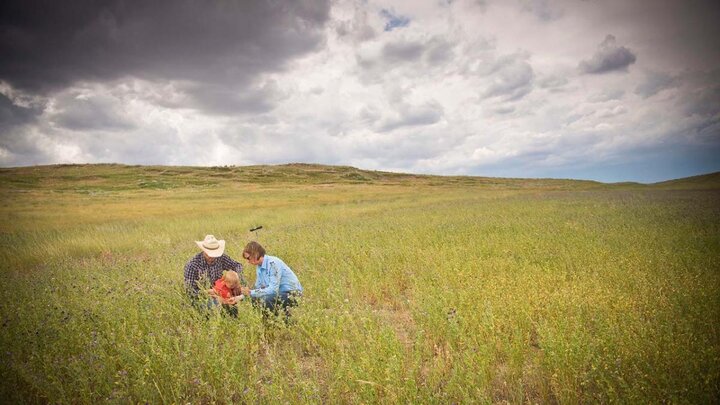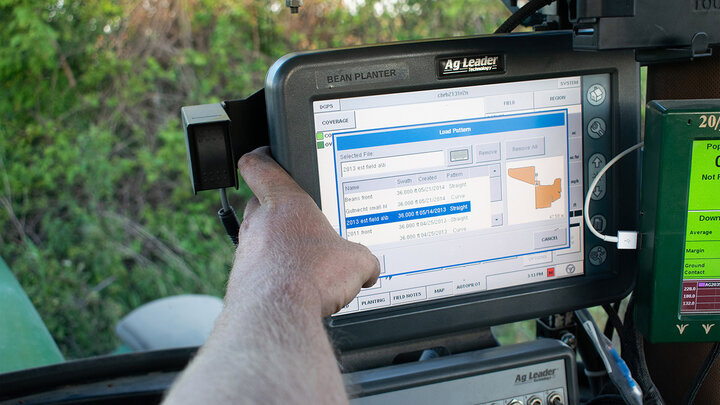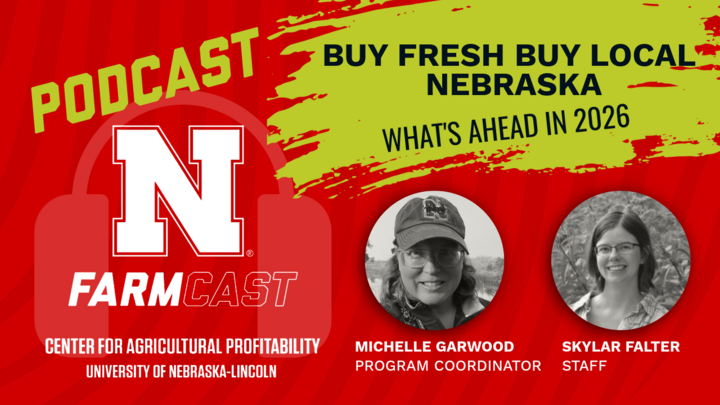There are numerous reasons for converting cropland to perennial grass pastures. Usually, lower commodity crop prices leading to reduced net return for cash crops is the main reason for an increase in the interest in converting cropland to perennial pasture. Another motive is to increase farm diversification in order to reduce financial risk. Recently, interest in reducing soil erosion on highly erodible land and increasing availability of grazing lands or hay to meet the high demand for feed resources have been reported. Steadily increasing pasture rental rates have also stimulated interest in converting cropland back into grass pastures.
| Establishment cost item | $/acre |
|---|---|
| Grass seed mixture (low diversity mixture) | 95 |
| Starter fertilizer (20-20-20) | - |
| No-till drill seeding | 14 |
| Herbicides + application | 40 |
| Interest on operations | 4 |
| Subtotal | 153 |
| Fertilization | |
| Fertilizer (60 lbs N/acre) | 27 |
| Maintenance | 10 |
| Subtotal | 37 |
| Fencing/water development (5 paddocks) | |
| Perimeter fencing (2-wire HTE & energizer) | 60 |
| Cross fencing (1-wire HTE) | 30 |
| Livestock water (tank, hydrant & underground) | 26 |
| Subtotal | 116 |
| Total | 306 |
However, establishment and maintenance of warm-season perennial grass pastures is expensive (Table 1). There are four key points to remember during the planning and planting process for perennial grasses. First, even though seed cost is the highest-cost item, cheap seed may not be a bargain when it comes to establishing a good stand. It is important to purchase the best quality seed that is available. Secondly, it is critical to have a firm seedbed prior to planting. Thirdly, pay special attention to seeding depth. A calibrated drill that will place the seed between ¼- to ½-inch into a well-packed seedbed is necessary. Lastly, early weed control is critical to the long-term success of perennial grass plantings.
Seedbed preparation is critical for successful perennial grass establishment. It is especially important to encourage good seed-to-soil contact. For perennial grasses, seeding into soybean stubble with a grassland drill will be reasonably simple. Seeding into corn stubble may require some additional work depending on the amount of remaining residue. The typical approach is to plow, disk and roll to prepare a seedbed that is suitable for grass establishment. However, shredding and baling the residue may be all that is necessary to accomplish no-till planting. If tillage is required, it is critical to pack the soil prior to planting. For warm-season grasses, a planting date from April 1 to May 15 should result in the greatest chance of successful establishment.
Peak production periods for warm-season perennial grasses are in June and July with some growth in September under good growing conditions. Stand establishment can be slower than preferred. However, substantial grazing can occur during the second year of establishment with good weed control. Development of fencing and water to support grazing is approximately one-third of the cost of grass pasture establishment (Table 1) and can be developed in the second year prior to grazing to reduce costs during the establishment year. It is possible to have pastures of perennial grasses that can be grazed as soon as 12 months after spring seeding, with favorable precipitation after following proper planting guidelines.
There are several other decisions that require some thought prior to planting. The natural tendency is to plant the same type of forage that was growing on the land prior to conversion to row crops. However, one of the reasons why the land may have been converted to row crops might have been the forage growing on it may not have been the best choice in that situation. It may not have been adapted or it might not have met the specific production goals. In either case, selecting a suitable forage to replant is critical for the overall success of the forage/livestock operation.
The final decision on the best forage to replant usually depends on the type of livestock operation and what other forages currently are available to support the operation. Many cow-calf operations in the Corn Belt have abundant spring pasture from cool-season grasses like smooth bromegrass. However, in July and August these pastures have low quality and grow very slowly so calf gains suffer, cows may lose weight, or conception rates are poor. To plant additional smooth bromegrass would do little to overcome this summer slump. Native warm-season grasses like big bluestem and indiangrass would be much better choices in these situations to complement existing pastures.
Even though establishment cost of warm-season grasses is great, the potential for long-term use results in a cost-effective conversion (Table 2). The other thing to keep in mind is grazing rates continue to rise. Once the pasture is established, its value of production as a grazing resource on a dollar per animal unit month (AUM) basis will appreciate over time. In the ten year span from 2011 to 2020, USDA-NASS reported an increase in average pasture rental rates for Nebraska from $27.30 per AUM to $47.00.
| Annual operating + amortized establishment costs1 | $/acre | $/AUM2 |
|---|---|---|
| 1 year (establishment + fertilization + fencing) | 320.38 | |
| 2 years | 182.59 | 60.86 |
| 3 years | 136.70 | 34.18 |
| 5 years | 100.06 | 25.02 |
| 10 years | 72.76 | 18.19 |
| 15 years | 63.84 | 15.96 |
1 Establishment costs amortized for 15 years at 5% interest.
2 $/AUM for warm-season grass mixture estimated using 3 AUM/acre for year 2 (75% of total production potential) and 4 AUM/acre for years 3-15.
Daren Redfearn is a Nebraska Extension Forage and Crop Residue Systems Specialist. Jay Parsons is a Nebraska Extension Farm and Ranch Management Specialist




